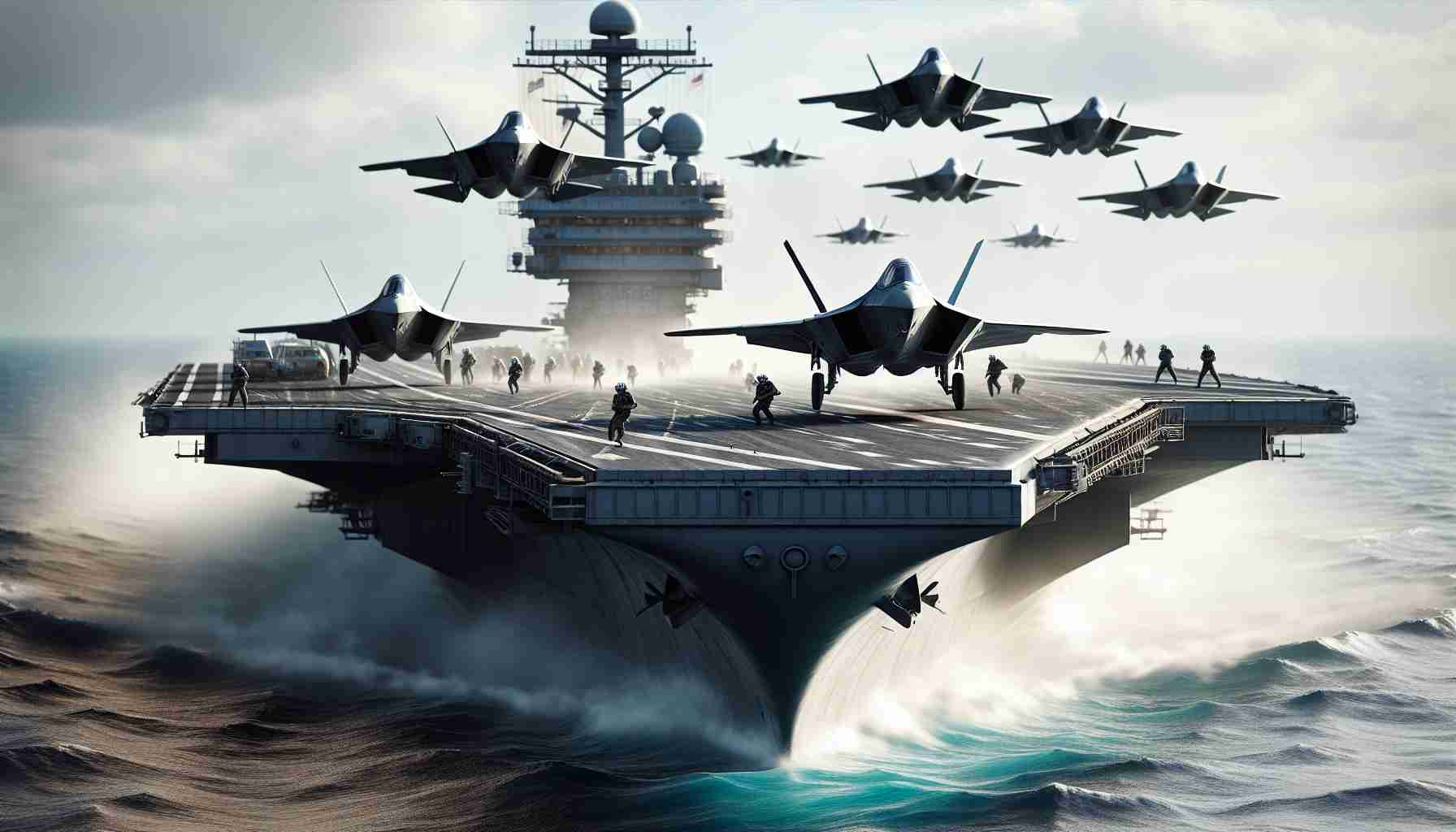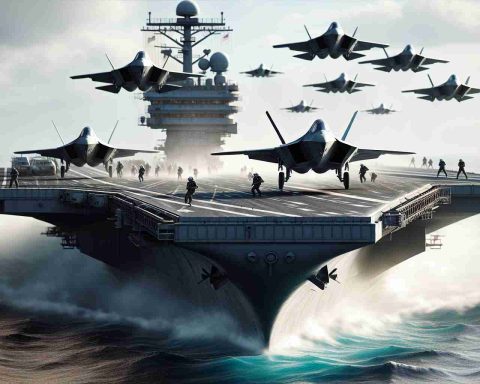American Stealth Fighters Settle in Japan as Defense Ties Tighten
In a bold move to reinforce its military presence in East Asia, the United States has positioned its F-35C Lightning II fighter jets in Japan, marking a significant development in the U.S.-Japan defense alliance. This deployment is part of the strategic forward stationing of the USS George Washington, a nuclear-powered aircraft carrier, to the region.
The F-35C, heralded for its stealth technology and versatility, departed from the George Washington and reached Japanese shores last week, integrating into Carrier Air Wing 5. A total of 14 jets are now stationed at Marine Corps Air Station Iwakuni on Honshu, one of Japan’s main islands. The presence of these advanced aircraft underscores the long-term U.S. commitment to regional stability.
This deployment comes under the umbrella of the 1960 security treaty between the U.S. and Japan, which aims to deter threats and bolster peace in the area. More than 54,000 U.S. military personnel are currently stationed in Japan, continually supporting these goals. Recent commitments by defense leaders of both nations further highlight their focus on enhancing military coordination and presence, especially in strategic areas.
The deployment adds a new dimension to the existing presence of F-22 Raptors and F-35A Jets in Okinawa and F-35B fighters already stationed in Iwakuni. As regional tensions with China and other nations play out, the U.S. Navy emphasizes the importance of having its most capable assets, like the multi-role F-35C, positioned to project power and maintain peace.
How the Deployment of F-35C Jets in Japan Could Impact Future Technologies and International Relations
In recent geopolitical developments, the positioning of American F-35C Lightning II fighter jets in Japan marks not only a strategic military maneuver but also a potential catalyst for innovation and technological advancement. Beyond its primary role in defense, this deployment invites intriguing questions about the intersection of military technology and broader societal impacts.
Advancements in Stealth Technology: A Catalyst for Future Innovations?
The F-35C, renowned for its stealth capabilities, represents the pinnacle of modern aviation technology. The jet’s ability to avoid radar detection can inspire breakthroughs beyond the defense sector—potentially influencing commercial aviation, privacy technology, and data security. For instance, developments in radar evasion could lead to improvements in signal interception prevention and data protection protocols in digital communications.
One might wonder: Could innovations derived from stealth technology enhance civilian industries? The answer lies in ongoing research and cross-industry collaboration. As defense contracts often fund high-level research, other fields may benefit indirectly, leading to trickle-down technological advancements.
Impact on Autonomous and AI Technology
Equipped with sophisticated sensors and data systems, F-35Cs rely heavily on advanced artificial intelligence for optimal performance. The integration of AI into military hardware could have significant ramifications for civilian sectors, including autonomous vehicle development, smart city infrastructures, and personal AI assistants. The challenge is ensuring that these advances adhere to ethical standards and do not infringe on individual privacy or security.
Economic and Social Considerations
Deploying these high-tech jets prompts economic considerations, both positive and negative. On one hand, increased military presence can boost local economies through infrastructure investment and job creation. On the other hand, such a presence has the potential to fuel regional arms races, leading to increased defense spending that might otherwise support social programs.
Controversies and Ethical Debates
Deploying advanced military technology abroad often raises ethical questions. Is the enhanced military presence justified by the peace it promises, or does it escalate tensions? The debate could shape defense policies globally as other nations observe or respond.
Pros and Cons of Enhanced Military Technological Presence
Advantages:
– Enhanced Security: Reinforced military alliances can act as deterrents against potential threats, providing peace of mind for allied nations.
– Technological Growth: Military innovations often lead to technological breakthroughs with civilian applications.
Disadvantages:
– Regional Tensions: An increased military presence can heighten tensions with neighboring countries, leading to potential conflict.
– Economic Costs: Significant resources allocated to defense could detract from investments in education, healthcare, or infrastructure.
Conclusion: A Path Forward
While the deployment of F-35C jets in Japan emphasizes security, it also sets the stage for broader implications in technology and international relations. As new technologies emerge, the need for ethical guidelines and international cooperation becomes ever more pressing.
For more insights on technological advancements and international defense, explore Defense News and Janes.






















